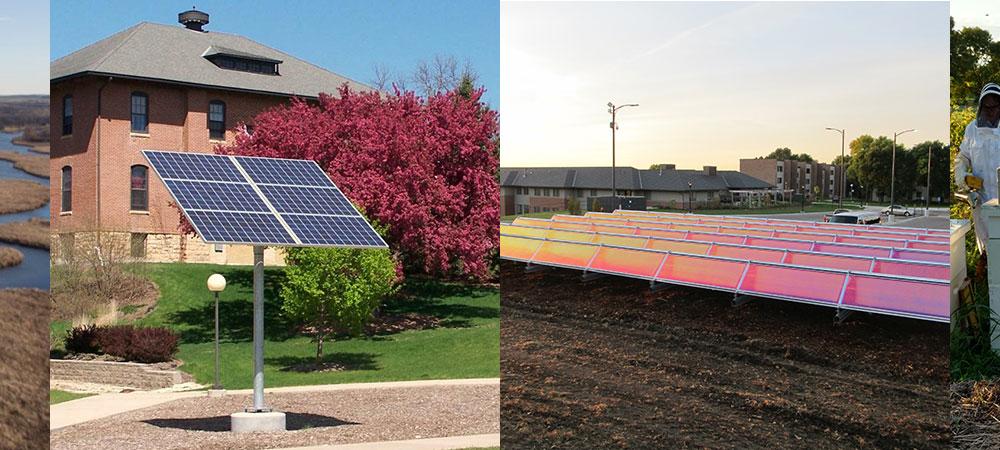
As a rural liberal arts school “in the middle of everywhere,” UMN Morris is blessed with abundant wind, rich soil, and ample sun. We are at the intersection of diverse ecological prairie and forest regions which makes our location an ideal laboratory for new ideas in sustainability. It's a place for students, faculty, staff, and community members to collaborate and develop a model for sustainability leadership.
The Morris campus has a broad array of initiatives devoted to sustainability. Among our areas of focus are renewable energy, zero waste, and sustainable construction and renovation, but our efforts extend to almost every field of our operations.
Our specific goals and initiatives
+
Zero Waste
What does zero waste mean?
Zero waste is a goal that guides people to change their lifestyles and practices so they emulate sustainable natural cycles, where all discarded materials are designed to become resources for others to use. This goal requires designing and managing products and processes to systematically avoid and eliminate the volume and toxicity of our waste materials. At the University of Minnesota Morris, we have been working to rethink our relationship with waste to reduce the amount that is generated by our campus. We will achieve this goal through:
- conservation
- reuse
- reclaiming and recycling
- education
Compost
A majority of our waste comes from organics and product packaging. Since 2012 we have worked with Sodexo, our dining service provider, to transition to biodegradable packaging and began to collect both their serving items plus leftover food scraps for cold-weather composting.
Morris students developed cold-weather composting in partnership with Facilities Management, Sodexo staff, and the Minnesota Pollution Control Agency.
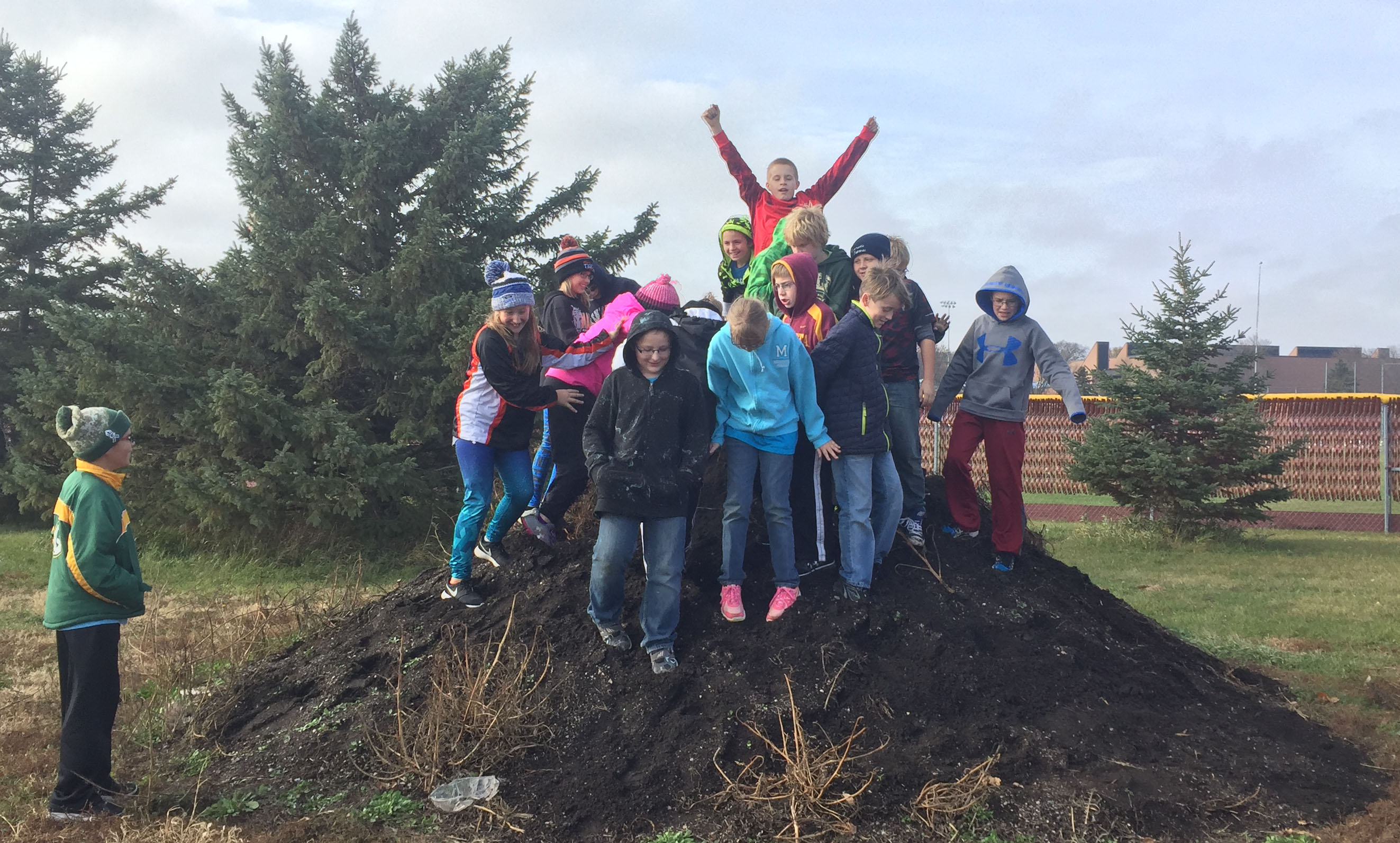
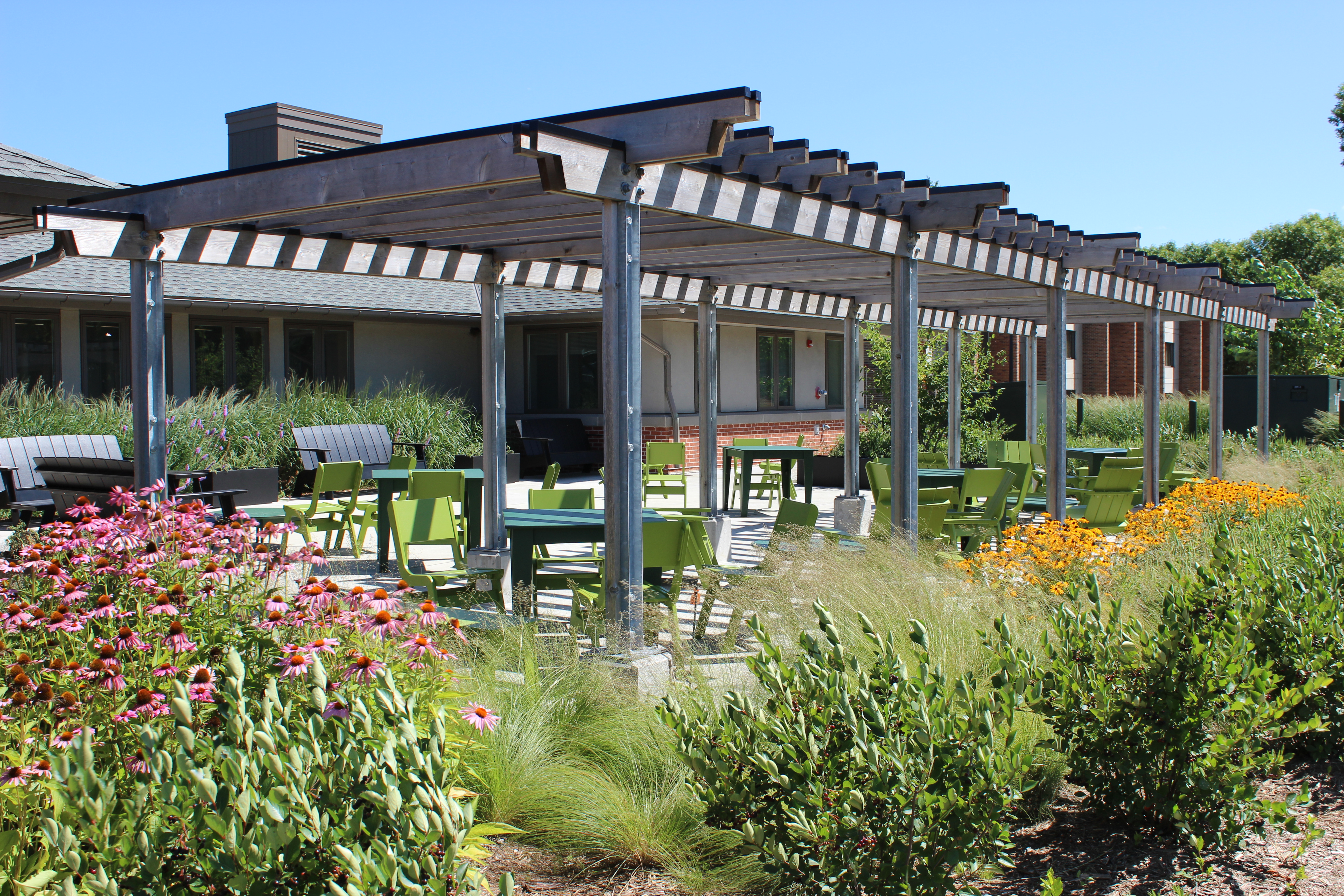
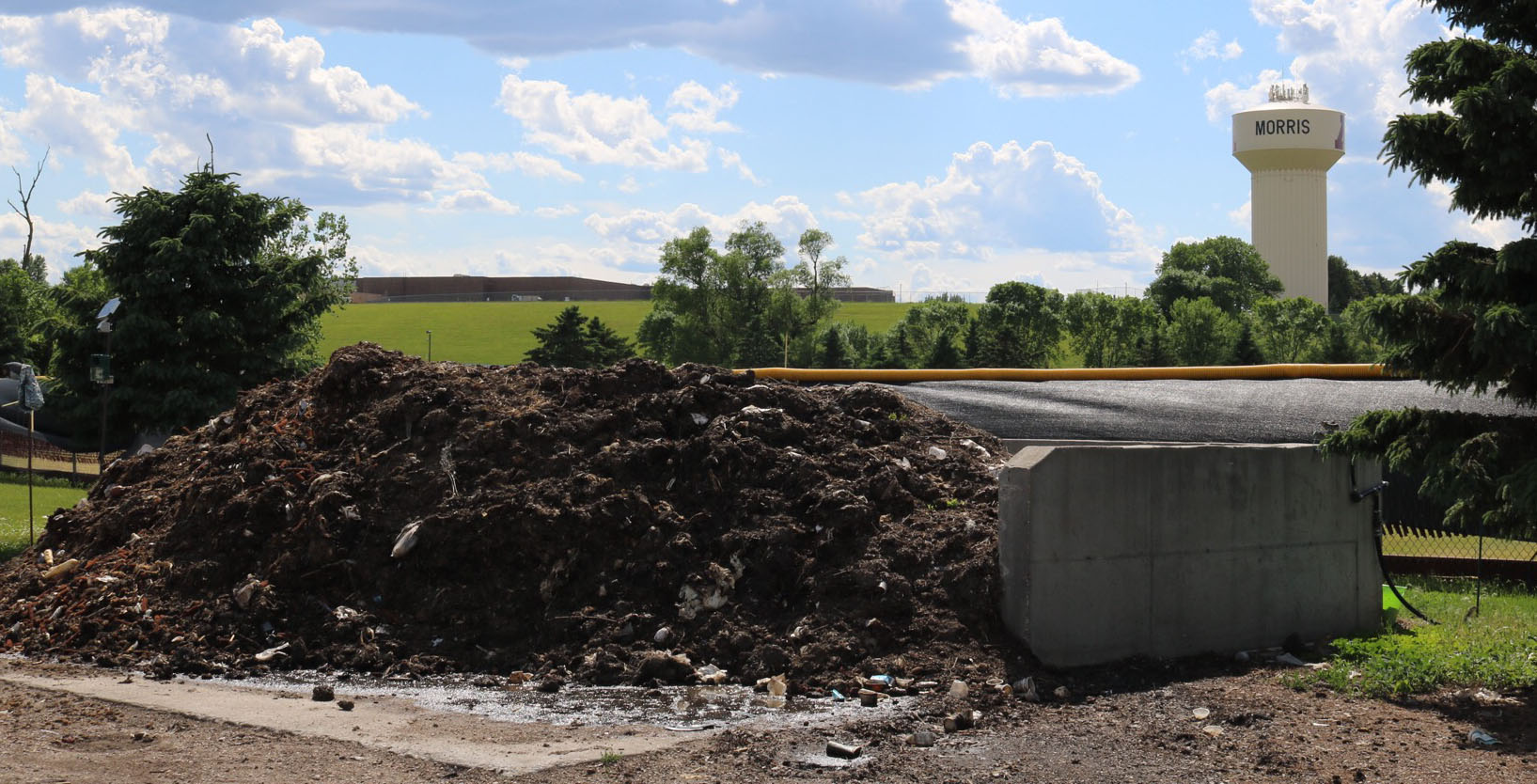
+
Local and Sustainable Food
Eating locally supports your community and provides fresh, nutritious food for you. We can all play a role in helping to improve the long-term sustainability of our food system by learning more about how our food choices affect the environment.
- The Morris campus is a founding member of the Pride of the Prairie, one of the longest-running local food efforts in Minnesota higher education, which promotes local use of foods grown in west central Minnesota.
- Our campus food service provider is contracted to purchase from area farmers and demonstrates the preparation of locally produced foods at the annual West Central Research and Outreach Center Horticulture Night.
- Twice a year the campus hosts a Pride of the Prairie Food Expo and Farmers Market along with a community meal featuring locally and organically grown foods.
Morris Healthy Eating
The Morris Healthy Eating project, funded by Blue Cross and Blue Shield of Minnesota, is working to expand the consumption of fresh vegetables and fruits on campus, within the city of Morris, and in Stevens County. Students provide support for local farmer’s markets, maintain an organic garden, and promote healthy food choices.
The Office of Student Affairs leads the Morris Healthy Eating project.
+
Renewable Energy
In 2019, UMN Morris was ranked as the #1 campus in the United States for most renewable electricity generated on campus per full-time equivalent (FTE) student by Environment America.
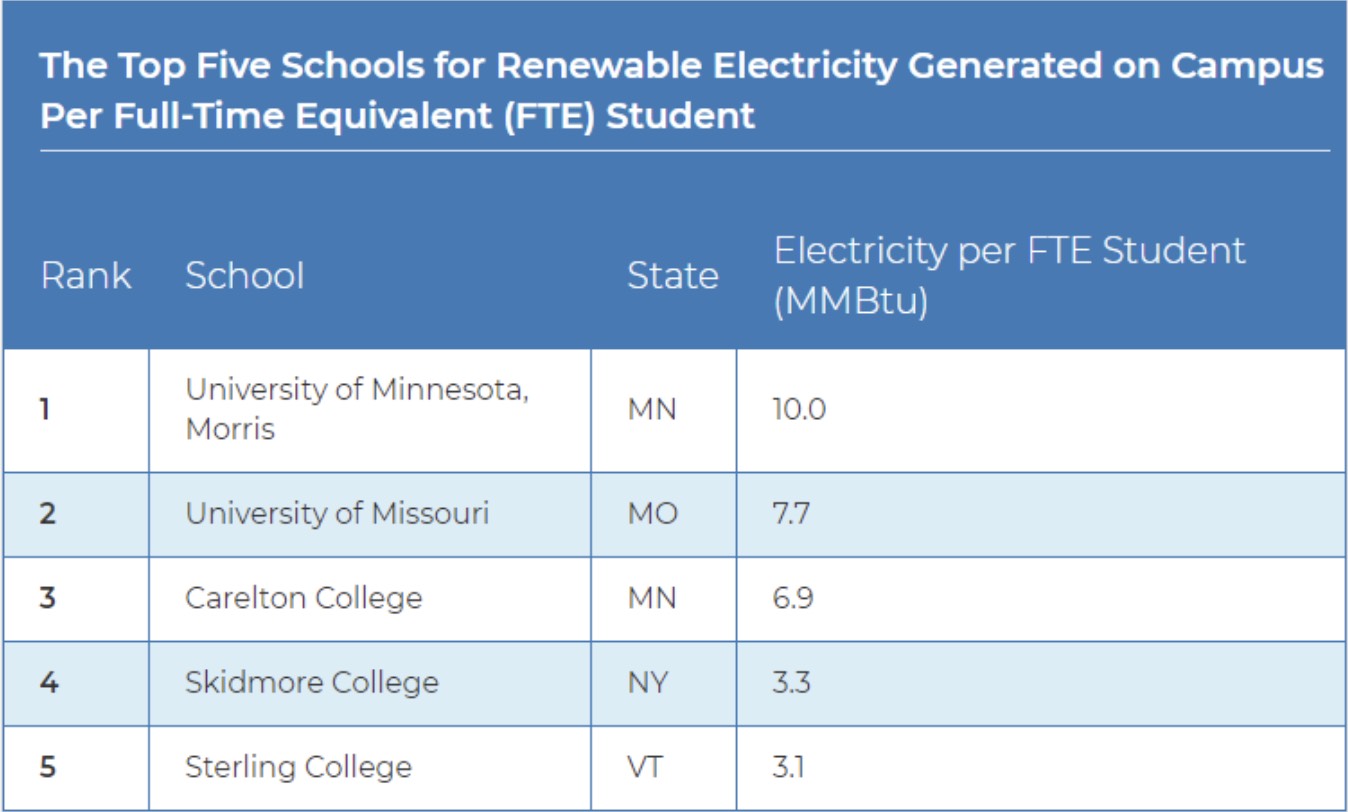
(Enivronment America’s 2019 Report “America’s Top Colleges for Renewable Energy”)
Morris is a unique location. A diverse and distributed renewable energy platform is a key part of our plans to achieve carbon neutrality. Within a mile of our campus you will find a biomass gasification facility, solar thermal and photovoltaic installations, green buildings, and conservation technologies, all of which contribute to our community goals to reduce our carbon footprint.
On average, about 70% of electricity used on campus daily is generated by renewables. But annually, we produce more electricity than we need. Here’s how it works.
Wind Turbines
Two wind turbines tower above the Pomme de Terre River and may be the first thing you see as you arrive on campus. Some days, the turbines produce more electricity than we need. When this occurs, the excess is sold to the local power provider, reducing the amount of fossil fuels they use to service homes, schools, and businesses.
- The University of Minnesota West Central Research and Outreach Center, our neighbor across the street, erected the first commercial-scale research wind turbine at a United States public university in 2005.
- The turbines generate more than 10 million kWh of electricity per year.
- The turbine towers are about 230 feet high; each has three 135-foot blades.
- The turbines can produce electricity at wind speeds as low as 7.8 mph. Maximum electricity output occurs at 29 mph wind speeds.
- In the near future, UMN Morris hopes to invest in large-scale energy storage to increase the amount of electricity from the wind turbines that can be used directly on campus.
Biomass Gasification Facility
The UMN Morris biomass gasification facility displaces fossil fuels with locally obtained and grown biomass, like corn cobs. The gasifier currently provides a significant portion of campus heating and cooling needs.
- The gasifier can consume about 9,000 tons of corn residue and prairie grass biofuels per year, harvested from farms within a 60-mile radius of Morris.
- It can gasify a variety of agricultural fuels including wood, perennial grasses, and crop residues.
- It displaces 8,000 tons of CO2 emissions per year.
- The gasification plant can generate 19 million BTUs of heat energy per hour.
- Fuel purchases for the gasifier put around $500,000 into the local economy annually.

Solar Arrays
There are multiple solar arrays at UMN Morris.
-Outside of the Green Prairie Community residence hall is a 20 kW array that generates around 20% of the building’s energy needs during the summer.
-A solar thermal array, made from locally produced panels, heats the recreational pool at the Regional Fitness Center. The 32 flat panels prevent about 15 tons of CO2 from entering the atmosphere annually.
-Behind the Science Building, half the solar arrays of the 3kW photovoltaic demonstration track the sun while the other 50% are fixed.
The campus plans to purchase more solar arrays in the near future.
+
Sustainability Facilities and Investments
Conservation
Conservation is how sustainability at UMN Morris began. In 2001, when students requested the campus purchase wind energy to reduce carbon emissions, the administration asked the students to find ways to cover the added costs through conservation. They started with reduced power & water usage plus increased campus recycling. That was only the beginning.
Fleet vehicles
We are in the process of switching our entire fleet of campus cars away from vehicles powered solely by fossil fuels. With the addition of a fully electric vehicle and numerous electric hybrid vehicles that use less gasoline and emit fewer greenhouse gases, we have decreased emissions by more than 21 tons of CO2 per year. In April 2019, the campus added a fully electric commercial lawn mower to its fleet.
Water
We placed flow restrictors on bathroom faucets and showers, installed low-flow toilets, and automated our urinal flushers. We also recycle water from our steam plant. Campus water use has been reduced by two million gallons each year.
Light and heat
We continue to invest money into energy-saving retrofits to our buildings by switching conventional lights for energy-saving LED lights or compact fluorescent bulbs. We also installed programmable temperature controls to reduce power usage. The improvements generate several hundred thousand dollars of savings a year and have paid for themselves via an innovative financing arrangement with McKinstry, an engineering and energy services firm.
Electricity
UMN Morris students led the effort to install VendingMisers® on refrigerated vending machines. The devices automatically power down the machines when they are not in active use, cutting energy consumption by more than 40 percent.
Construction and renovation
In construction, reusing existing structures and reclaiming materials are some of the best ways to reduce consumption of resources and cut emissions. Per a student-led initiative, all future construction and renovations will adhere to Leadership in Energy and Environmental Design (LEED) standards.
Renovation
The Community Services Building, originally an engineering structure built in 1915, is on the National Register of Historic Places. When the campus needed to renovate it to create the Welcome Center, we decided to bring it up to 21st century environmental standards while preserving its links to our heritage.
- The new structure earned a LEED Gold rating.
- It is one of the most energy-efficient structures in Minnesota and is the first building in the state––as well as the first listed on the National Register of Historic Places—to use chilled-beam technology.
- Its interior features wood reclaimed from exterior demolition.
- Motion sensors and dimmable light fixtures cut power use.
- Placement and design features provide ample sunlight and passive solar benefits.
- Upon completion, the Welcome Center received the 2011 Minnesota Construction Association Award.
Housing
Opened in fall 2013, the LEED-Gold certified Green Prairie Community is an innovative living and learning environment that complements UMN Morris’s focus on environmental sustainability. Environmentally-friendly features include:
- Real-time energy monitoring system, which helps residents use power wisely
- High thermal mass insulated concrete forms for superior insulation
- Low VOC interior finishes and furnishings for improved air quality
- Site placement and building design that provides daylight in all public and residential spaces and enhance green design features and links to the prairie ecosystem
- Orchard, edible landscaping, and gardens
- Low-flow water fixtures
- Power, heat, and cooling from campus renewable energy sources
- Abundant bike racks
- Residence programs on sustainability issues
- Community meals prepared with food produced onsite and locally
Investments
The Morris campus has made considerable investments in sustainability, which are providing immediate savings and environmental benefits. In addition, we will continue to save money as a result of these investments while reducing our carbon footprint. Significant portions of these investments go directly to the local economy, supporting farmers and small businesses in the region.
- Over $2.6 million invested in energy conservation and retrofits for the campus, facilities, and operations, which helped us reduce electricity consumption by 1 million kWh between 2007 and 2012
- $4 million invested in our second wind turbine, greatly increasing the amount of power we get from renewable energy
- Approximately $9 million invested on the biomass gasification plant, which included about $3 million in federal and other grant funding
- $1.4 million invested in capital equipment to further improve the performance of our systems, like the absorption chiller and the steam turbine on the biomass plant
- Over $500,000 in biomass purchases from the farming community annually, displacing significant carbon emissions
- Investments to build the new Green Prairie residence hall that will yield energy savings for decades
- A solar thermal system that lowers emissions by approximately fifteen tons of carbon per year, purchased locally and funded in part by grants and an anonymous donor
Maintenance
Landscape
We employ many green best practices. Examples include storm water gardens, wetlands, jewel box greenhouses, low-maintenance native plants, pedestrian-friendly roadways, and an organic vegetable garden.
Campus maintenance crews use eco-friendly cleaners and recycled paper products whenever possible.
+
The EcoStation
Thanks to the vision of generous donors, the University of Minnesota Morris has the opportunity to create an environment where students will play a pivotal role in solving the problems facing our world.
Graced with ponds and prairie grasses, forest and farmland, these 140 acres outside Ashby, Minnesota, are more than mere wide, open space—they are the ideal setting for undergraduate students and scholars.
The EcoStation expands and complements the sustainability learning laboratory that has developed on the Morris campus and is already making possible an array of education, research, and creative activities on site—in fields as diverse as biology and creative writing.